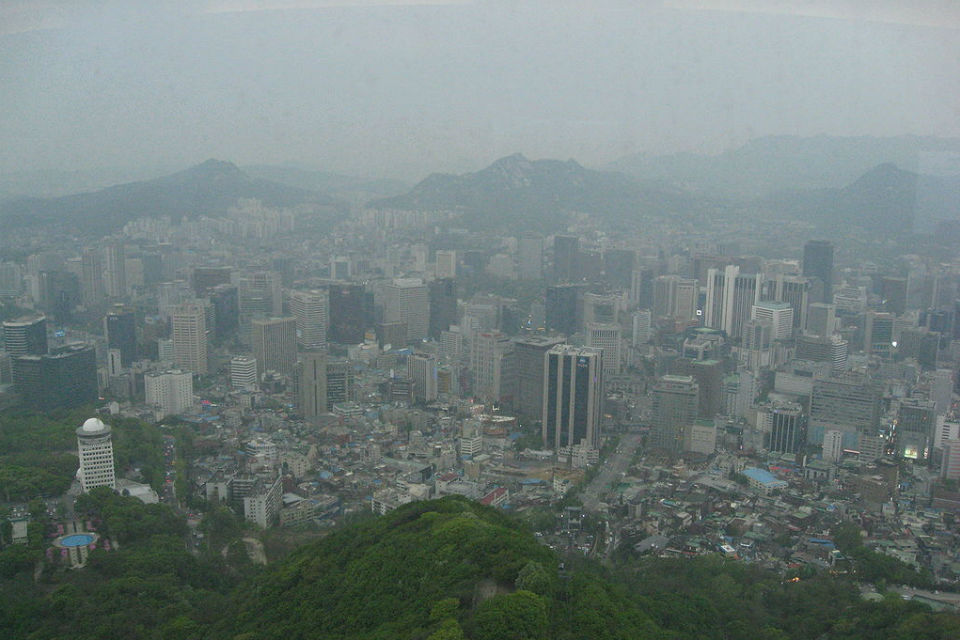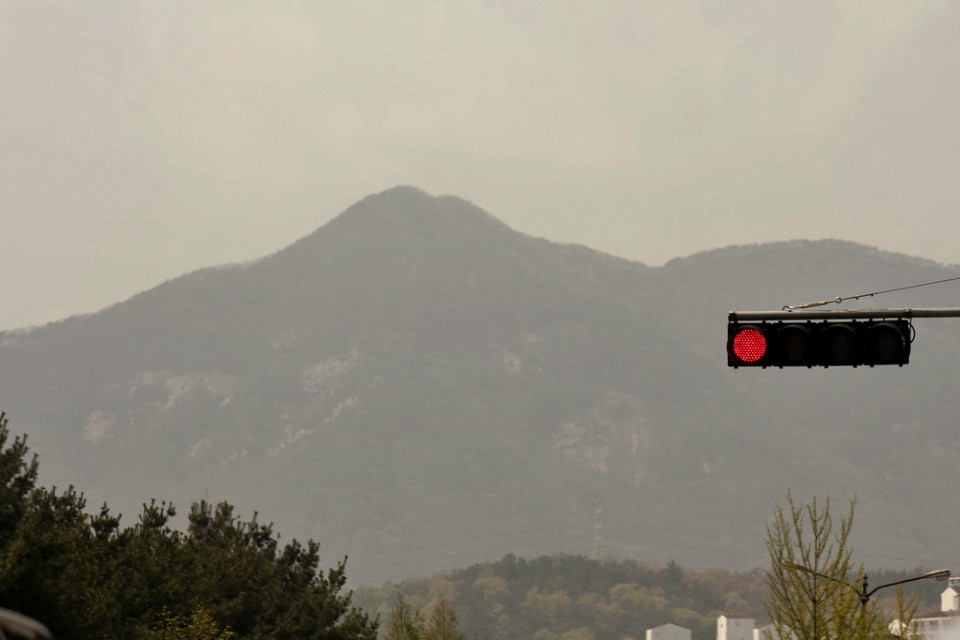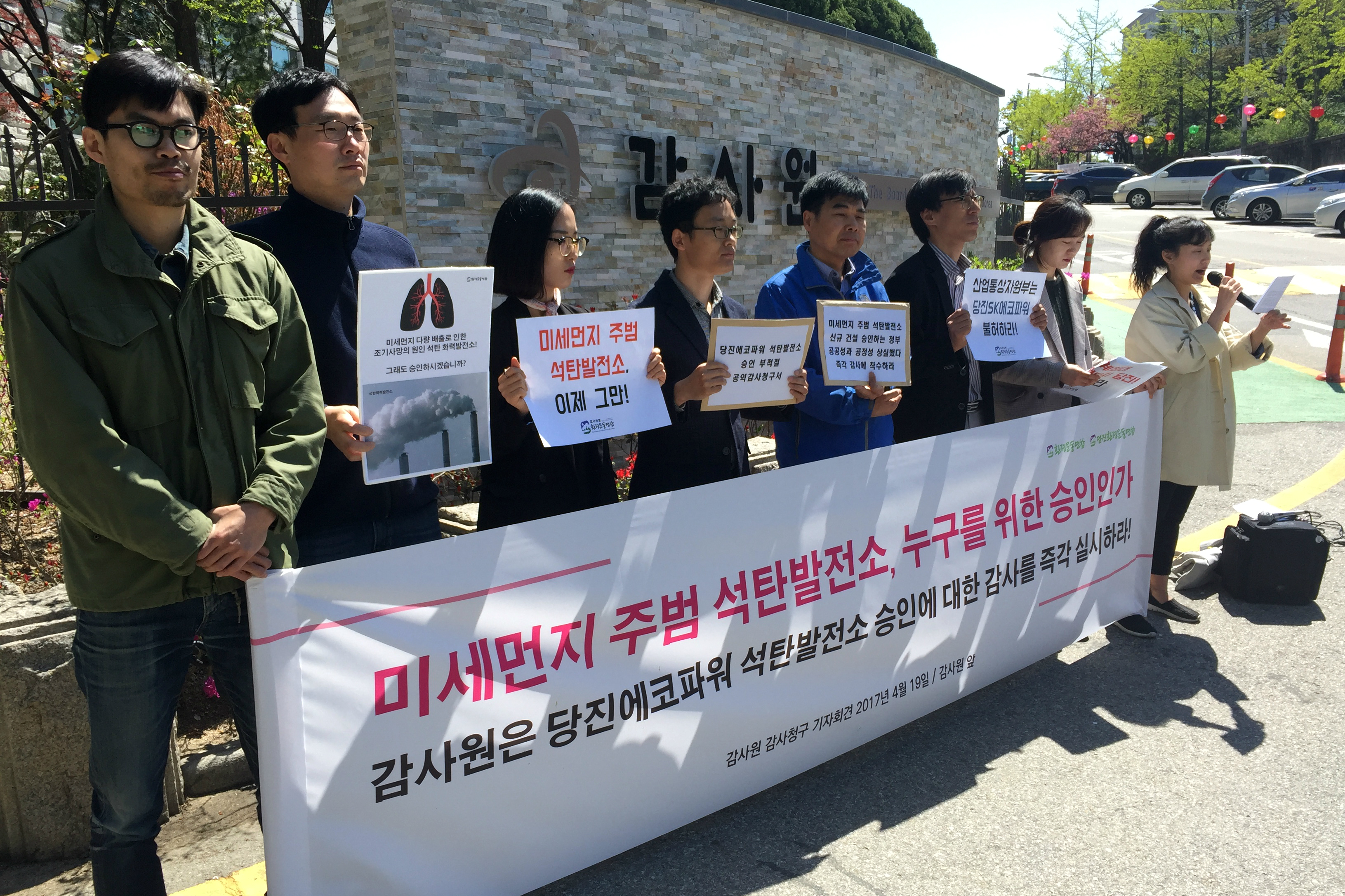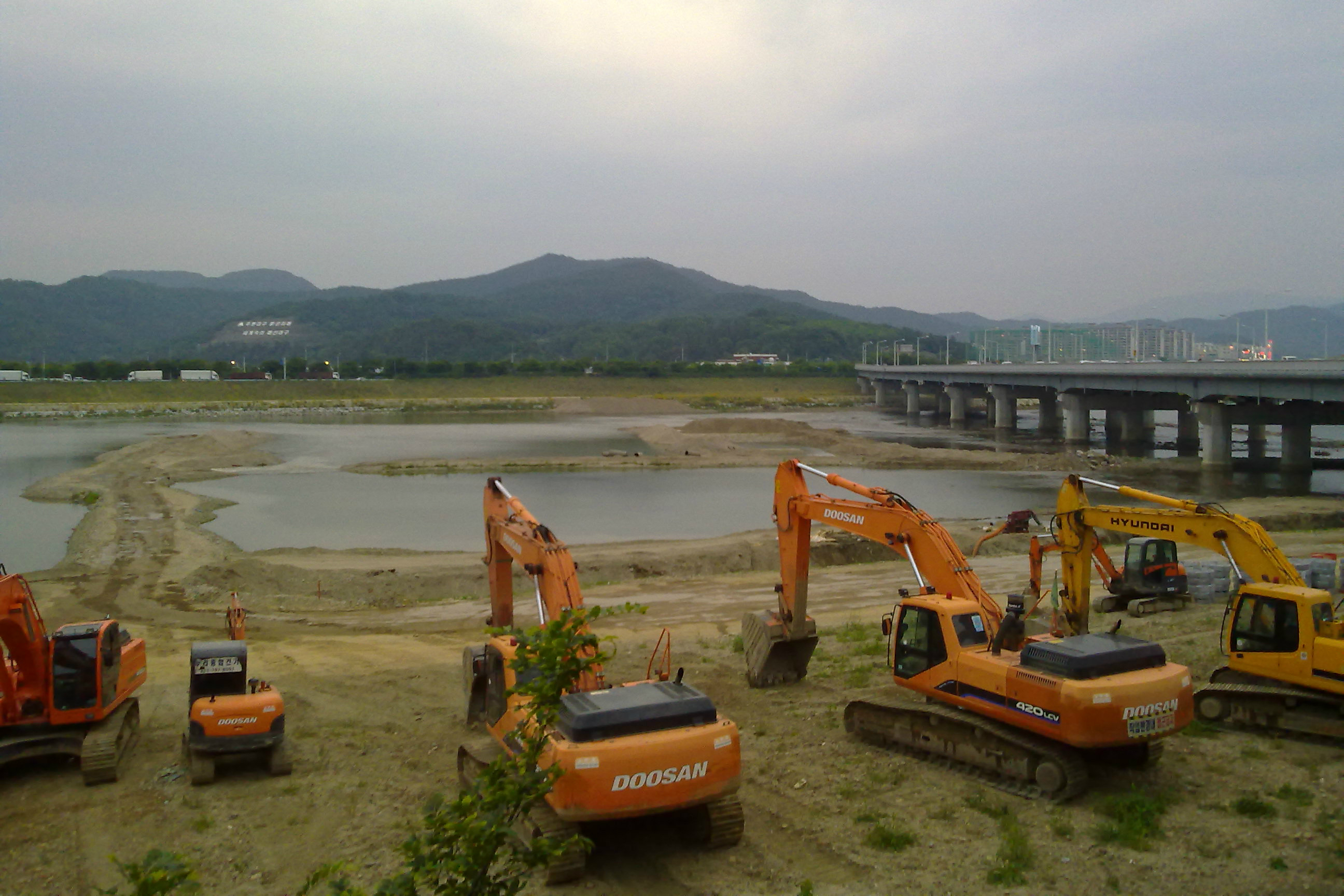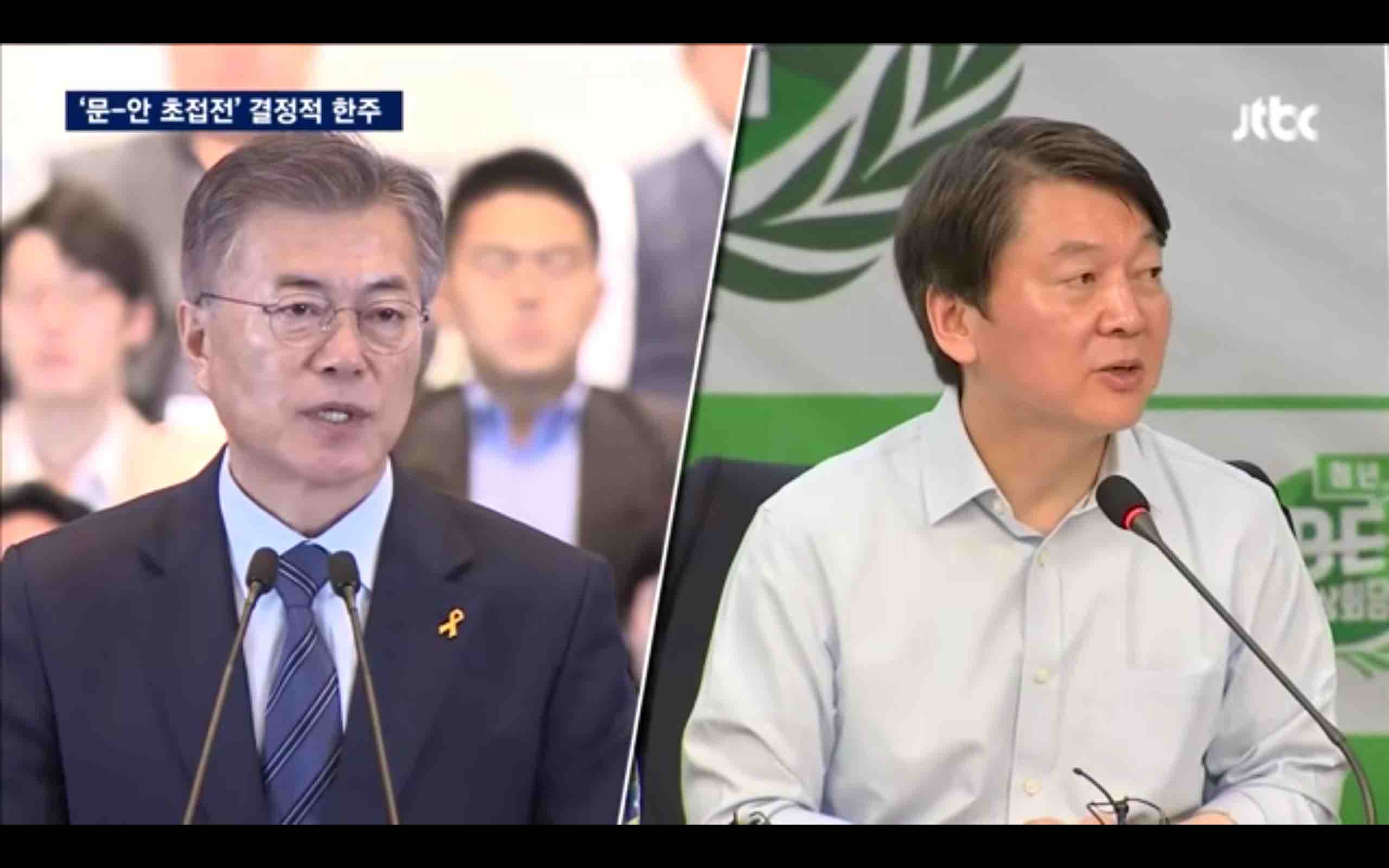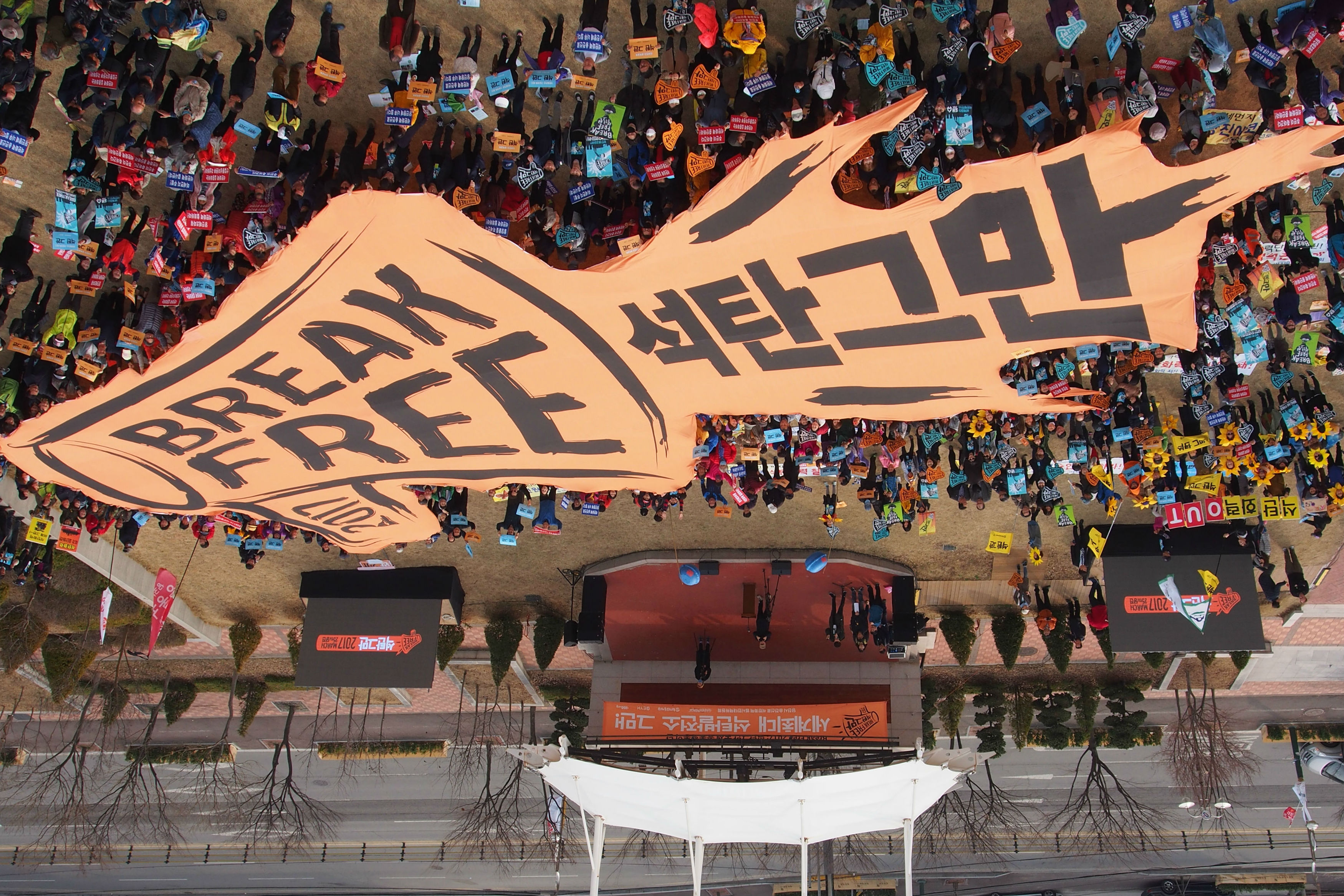fine dust
South Korea's Fine Dust Financiers
As South Korea’s serious air pollution problems persist, two of the country’s largest banks have sparked anger by financing new coal-fired power plants, a major source of domestically generated particulate matter (PM). PM, popularly known as fine dust, has been labeled a “social disaster” in South Korea. Yet
Do I Need to Wear a Face Mask in South Korea?
Walk along the street in any South Korean city and you’ll see plenty of people wearing surgical-style face masks. Covering the nose and mouth and held in place by elastic loops that reach back behind the ears, the masks are cheap and sold in almost all convenience stores and
Gwanghwamun Democracy 2.0: Air Pollution Roundtables
Jongno, where Gwanghwamun Square is located, is one of Seoul’s most polluted and heavily congested districts. So when I heard that a huge outdoor event on air pollution was taking place on the square, I raised my eyebrows. “Isn’t it sad that we’re
More Bad News for Environment: Another Coal-Fired Power Plant Coming to S Korea
Residents of South Chungcheong Province and environmental campaigners reacted angrily on Wednesday after the South Korean government granted last-ditch approval for a new coal-fired power plant in the city of Dangjin. Representatives of Korea Federation for Environmental Movements (KFEM) held a press conference outside the Board of Audit and Inspection
Which South Korean Presidential Candidates Actually Care about the Environment?
On a global level, it seems more and more people care about environmental issues. But maybe not in South Korea. The 2015 Paris Agreement to limit global greenhouse emissions, Barack Obama’s Clean Power Plan in the same year, and China’s 2013 China’s Action Plan for
Top Presidential Contenders Pledge to Fix South Korea's Air Pollution
South Korea is in the midst of the country’s first springtime election campaign since 1971. And it has brought the issue of fine particle dust to the fore, as voters are irritated by air pollution in the lead-up to the May 9 vote. At this point, the 60-day race
Coal, Dust and Hot Air: South Korea's Dirty Energy Habit
On the far side of a dry rice paddy, where magpies scratch at the earth, stands Dangjin Coal-Fired Power Complex, the biggest coal plant in the world. Inside its blue-clad towers are ten giant units capable of generating almost 5,900 megawatts of electricity — enough to power some five

